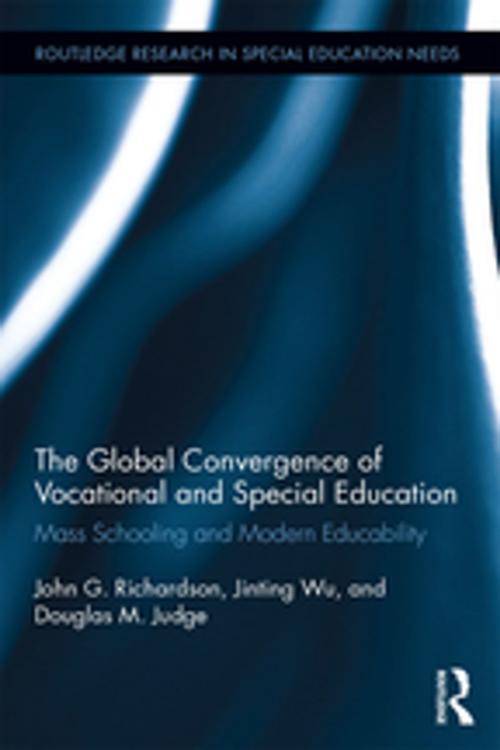The Global Convergence Of Vocational and Special Education
Mass Schooling and Modern Educability
Nonfiction, Reference & Language, Education & Teaching, Special Education, Social & Cultural Studies, Social Science, Sociology| Author: | Jinting Wu, Douglas M. Judge, John G. Richardson | ISBN: | 9781135055493 |
| Publisher: | Taylor and Francis | Publication: | December 1, 2016 |
| Imprint: | Routledge | Language: | English |
| Author: | Jinting Wu, Douglas M. Judge, John G. Richardson |
| ISBN: | 9781135055493 |
| Publisher: | Taylor and Francis |
| Publication: | December 1, 2016 |
| Imprint: | Routledge |
| Language: | English |
The global trend in educational participation has brought with it a cross-national consequence: the expansion of students with "special needs" (SEN) placed in special education and the growth of "low achieving" students diverted to vocational tracks. This book explores the global expansion of special and vocational education as a highly variable event, not only across nations of considerable economic, political and cultural difference, but between nations with evident similarities as well. The Global Convergence of Vocational and Special Education analyzes how the concept of secular benevolence underscores the divergent and convergent trajectories that vocational and special education have taken across the globe. The authors embrace national differences as the means to observe two dicta of comparative research: similar origins can result in very different outcomes, and similar outcomes can be the result of very different origins.
The global trend in educational participation has brought with it a cross-national consequence: the expansion of students with "special needs" (SEN) placed in special education and the growth of "low achieving" students diverted to vocational tracks. This book explores the global expansion of special and vocational education as a highly variable event, not only across nations of considerable economic, political and cultural difference, but between nations with evident similarities as well. The Global Convergence of Vocational and Special Education analyzes how the concept of secular benevolence underscores the divergent and convergent trajectories that vocational and special education have taken across the globe. The authors embrace national differences as the means to observe two dicta of comparative research: similar origins can result in very different outcomes, and similar outcomes can be the result of very different origins.















